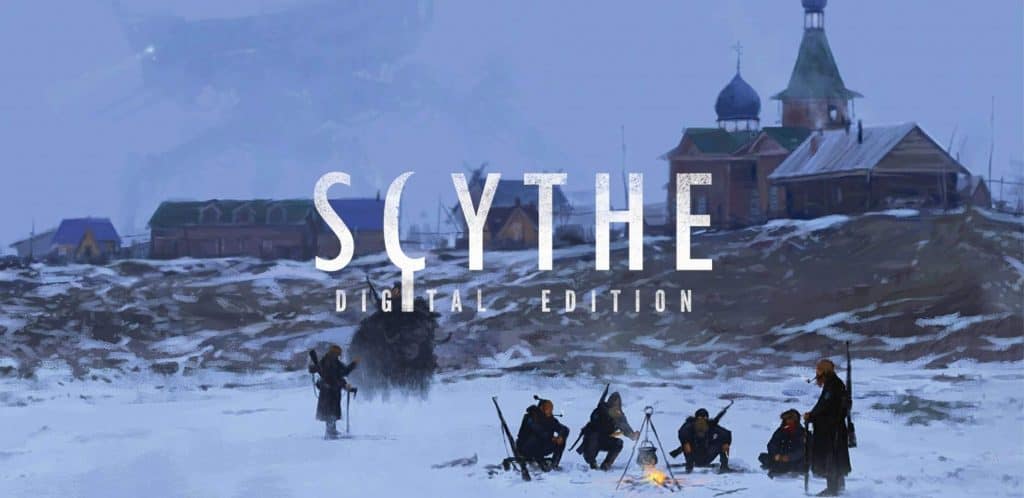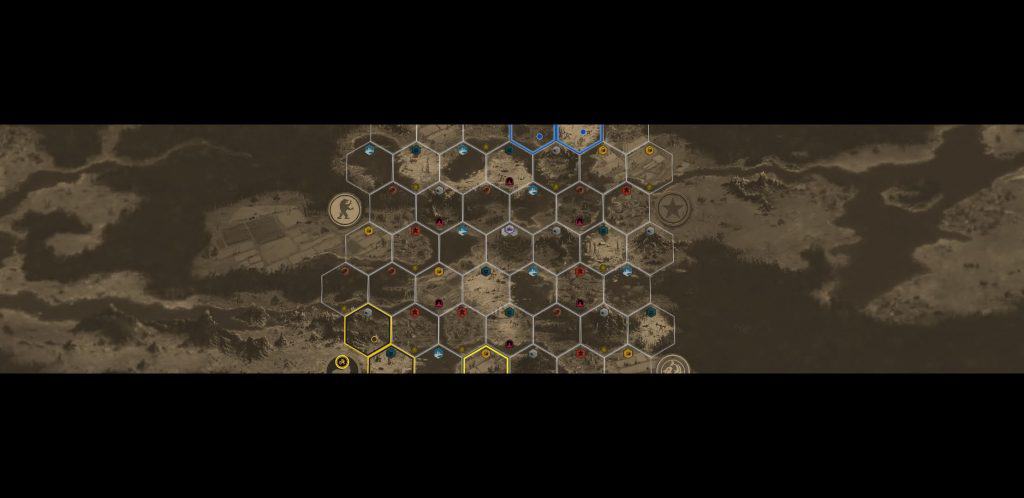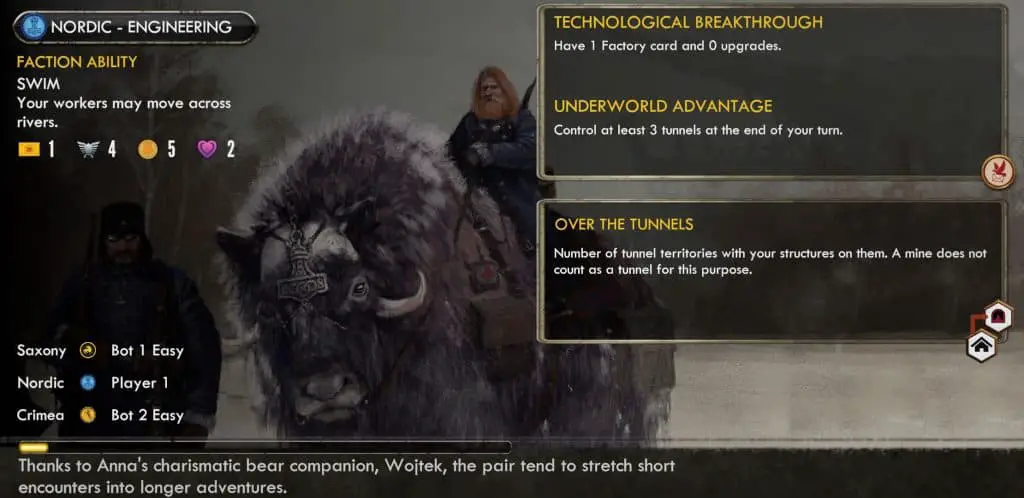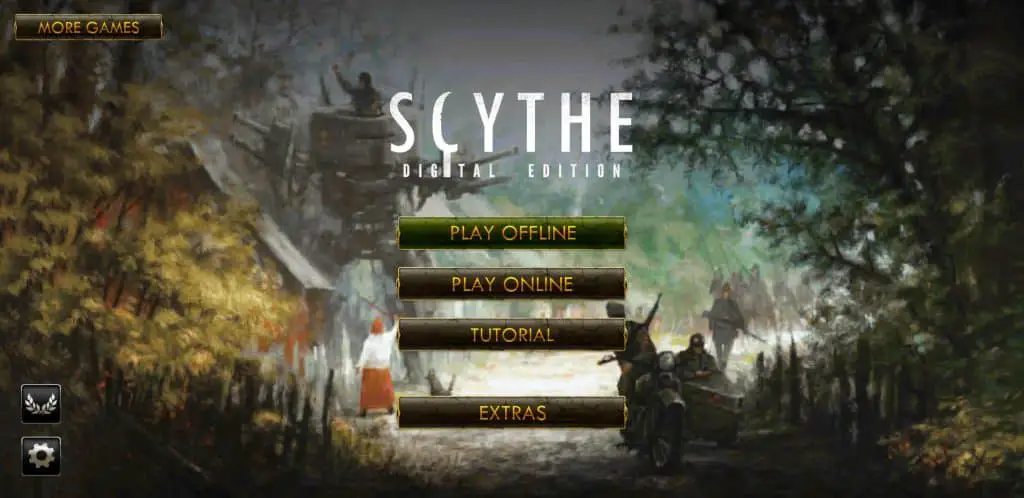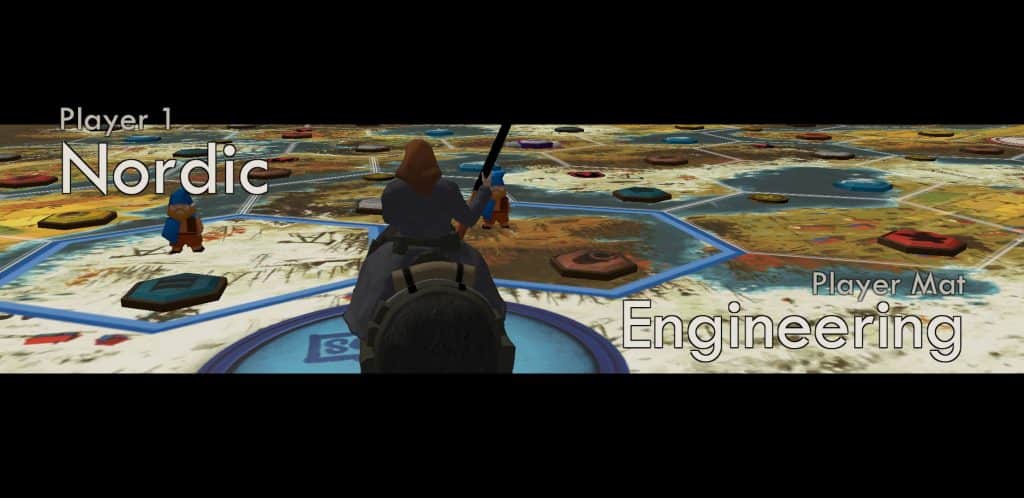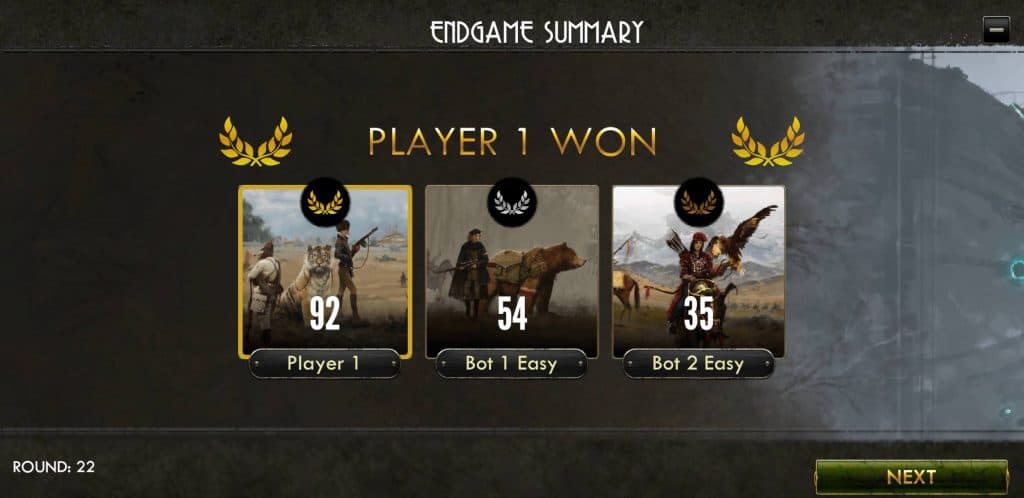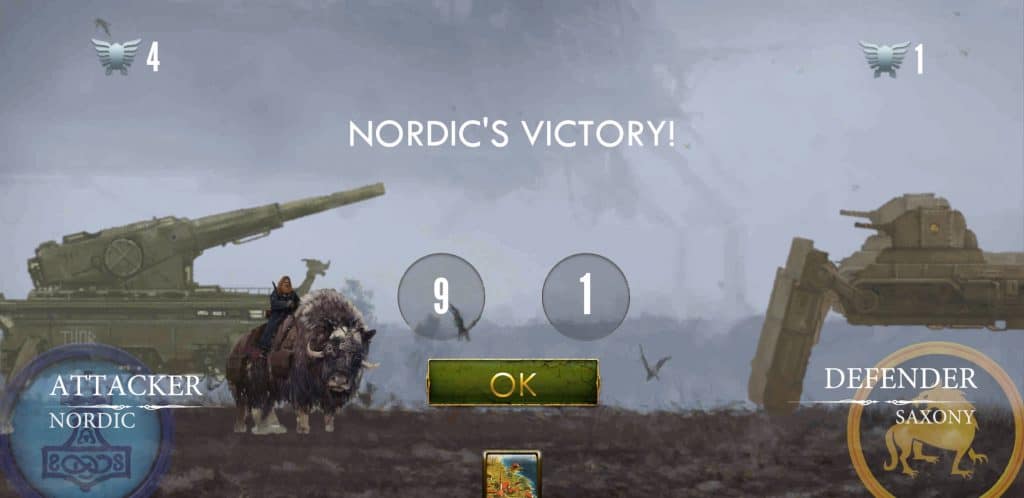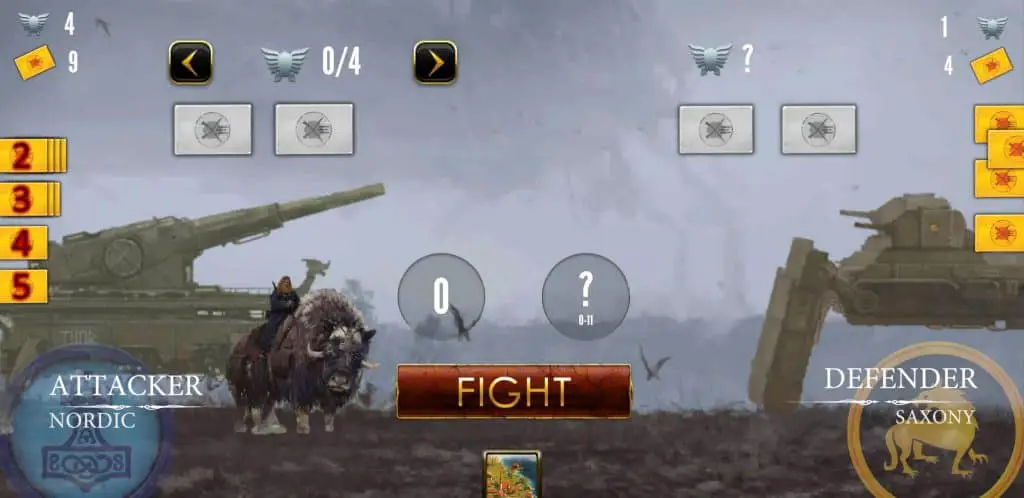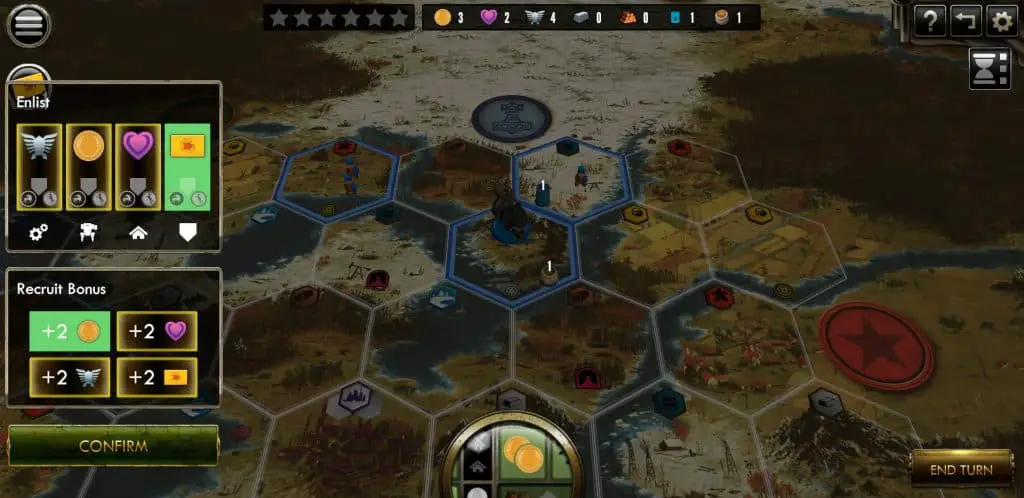Review: Scythe App Review
Does this digital adaptation of the wildly popular game cut down the competition?
When Scythe was launched on Kickstarter it was an immediate success, it’s combination of beautifully themed alternative Eastern Europe, asymmetric game play and miniatures meant that it was always going to be wildly popular amongst fans of medium to heavy weight board games and so when the app version of Scythe was announced I was understandably excited to be able to play this game on the go and see what all of the buzz was about.
Unfortunately for me the first few years of Scythe Digital was spent on Steam only which although a perfectly fine platform for games, it’s just not one that I can find the time in my day to use in order to play games. And thus after years of waiting, Scythe Digital is finally getting the play it deserved thanks to it’s arrival on Android and iOS.
Scythe is an engine building war game where the threat of war is far more prevalent than actual war. It’s set in an alternative 1920’s Eastern Europe where warring factions set out to control the area, gain resources, produce buildings, giant metal troops called mechs, gain power, popularity and complete encounters and ultimately collect 6 stars, ending the game and having enough VP at this point to be crowned the winning faction.
On your turn you are able to take one of four top row actions which provide you the ability to move, produce from the land you are in control of, bolster to increase your fighting power/popularity or to trade for resources you don’t currently have access to. These top row actions allow you to move around the board, claiming territories, building up your strength and therefore the threat of war against your opponents and importantly, providing you with the resources you need in order to be able to take your matching bottom row actions.
Bottom row actions of your player board give you the opportunity to improve you faction in various ways for the cost of the resources you are collecting. Upgrading your top row actions and reducing the cost of your bottom row actions, building buildings which allow you to move between territories, gain more resources, power or popularity, gain bonuses every time another player uses a bottom row action or deploy mechs, the mechanical vehicles used to transport your workers and resources around the board, claim new territories and engage in combat. Each turn you choose one of these top row actions to complete and then have the option, should your resources allow, to complete the below corresponding bottom row action.
The asymmetry of this games comes from the varied combination of top row board paired with bottom row faction board, each combination providing not only a different pairing of top row actions and corresponding bottom row actions but also coming at a different cost depending on the faction. One game could see you piloting your cheap mechs around the board, grabbing territories and stealing resources from under powered opponents, another could see you producing enough resources to be able to complete your enlist action each time, gaining bonuses from your opponents and parlaying them into VP as the game goes on. Understanding how to maximise the combination of faction board and top row board is the key strategy to winning in Scythe and where all of the decision making and optimisation of your engine comes from.
If all Scythe was, was a challenge of expansion and optimisation then you’d had a game that would appeal to a wide audience but would miss some of what makes it an interesting and challenging game, it would be a solitaire game on a multiplayer map. Thankfully that isn’t all that Scythe is as the introduction of a simple combat system paves the way for not only war itself but far more interestingly, the threat of war. Combat is handled by players committing up to 7 of their power resource plus the addition of one or two combat cards they collect throughout the game with the highest total winning the combat, taking control of the territory and any resources found there as well as banishing all workers, mechs or leaders back to their factions home base.
Losing combat can be punishing, the loss of resources can set you back turns as well as losing ground on your exploration of the board and ownership of territories which will eventually become VP. However over extending yourself to win can put you in danger of never recovering the power you spent and making yourself a target for your opponents en mass. It’s this risk factor associated with combat that can lead to the threat of being able to push all of your military chips to the centre of the table being as powerful as actually doing so. Many a war has been won committing only 2 or 3 power rather than the full 7 knowing your opponent will only bid 1 because it’s a fight they know they can’t win and want to save their power for the retaliation.
Add to the above the nuances of each factions unique abilities, strengths, weaknesses, the varied powers that come with each factions mechs, encounter cards to collect, additional top and bottom row actions which can be gained via the factory and the subtleties of navigating a claustrophobic board and you have a game which is relatively simple but packed with strategy and challenge all packaged in a 1920’s dieselpunk soviet era box.
One of the huge selling points for the physical version of Scythe was the overall presentation, especially the artwork of Jakub Rozalski who brings to life this alternate history on both board and cards. In addition to this the components for Scythe were interesting especially the various different miniature models of the mechs which would litter the board as well as each factions unique leader model. Thankfully all of these design elements have been ported over to the app version of Scythe and fit perfectly on our devices. The board and cards have the same beautiful artwork as the source material and the miniatures have been rendered as 3D models to be move around the board; either looking like plain plastic figures or with a flick of a toggle in the settings, fully painted and lavish real life looking miniatures. The user interface does a good job of displaying all of the necessary information in a clear way, although I did find having to move between various information screens to find out exactly which stars I had earned or what my specific faction abilities were to be a bit more cumbersome than having it all on one screen. The iconography is simple and makes understanding your player boards a breeze despite the volume of icons that they contain, it’s a triumph of simplified design that fits well with the rest of the aesthetic decisions made with both the board game and the app version.
Elsewhere Scythe digital provides game modes for both single and multiplayer games both offline and online for up to 5 players against either human players or an AI of varying difficulties. The AI provides a solid challenge for single players and the ability to randomise or even select the combinations of factions and action boards for all players means that you are able to develop strategies and counter strategies even when playing alone.
Online multiplayer offers the same level of customisation for up to 5 players as the offline multiplayer and gives you the chance to play async games against friends and strangers across the globe. There is however one major issue with the online platform for Scythe digital that makes it far more complicated to play online than it should. This issue comes when attempting to set up an online game, unlike most other apps, in order for you to create an online game with specific friends, all parties must be present and logged into Scythe at the time the game is created. Normally you are able to create a game and send the invite for you friends to join before beginning an async game, by requiring everyone to be present you take away the ease and quickness of online play and it suffers because of that. I am far less likely to want to play Scythe online if I have to jump through these kind of hoops which other board game apps simply do not lay before me.
Overall Scythe Digital is a good implementation of the physical game, it gives me the same feeling as playing it in person with a reduced play time, down to about 20 minutes. It looks good with it’s 3D board and models and makes use of the beautiful artwork from the physical game whenever it can which is a great choice because I rarely tire of seeing it. The AI provides me with plenty of challenge that means I’m happy to play this solo against only the computer which is good considering getting this played online is far more of a faff than I would like from a modern board game app. The fact that the app version of Scythe took 2 years to make the jump from Steam to Android and iOS seems crazy to me but it was worth the wait. It’s a fun and interesting game that has me thinking from turn one until the end, I enjoy determining a strategy based on my faction and action board combinations and optimising my decision making en route to a victory. While there is a learning curve when it comes to strategy within Scythe, it’s never too steep or too long a curve for you to be disheartened, and if anything it pushed me to want to learn more and more and practice with each faction combination to learn the secrets of each board and unlock the ultimate strategies for each. As one of the biggest games of the last few years Scythe makes a good leap onto the digital tabletop and is a game I’d recommend for those looking for a medium weight game dripping with theme and strategic while continuing to be fun.

